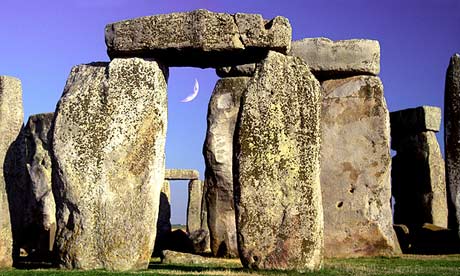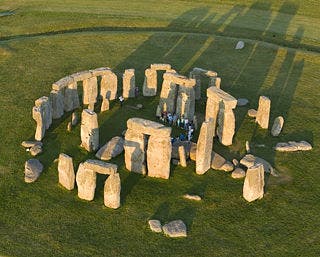The mystery surrounding Stonehenge is still actual, puzzling archaeologists for decades; how was it built, why there, and most interesting, what purpose does it serve? Now, after dating some bone fragments of men, women and children, a team of researchers believe they have the answer.
Centuries before the imposing monument was raised, the site started its life as a burial ground, according to a recent theory. Professor Mike Parker Pearson, who has been working at the site and on nearby monuments for decades analyzed the site and bones found there, and concluded that the earliest burials predate the monument by over 200 years. The first bluestones, the smaller standing stones, were brought from Wales and served as grave markers 5000 years ago, in 3000 BC.
Initially, it was thought that only men were buried there, but time has shown that in fact, women were also buried at the spot, and so were children, including a newborn baby.
“At the moment the answer is no to extracting DNA, which might tell us more about these individuals and what the relationship was between them – but who knows in the future? Clearly these were special people in some way,” Parker Pearson said.
They also found a mace head, which is about as important as a scepter for that period, as well as a little bowl burnt on one side, which may have held incense, suggesting that the buried were either political or religious leaders.
Now, while this all does make sense and is definitely a distincit possibility, the theory is a little speculative. It must have taken them hundreds of thousands of labor hours to build, so it’s natural that Stonehenge was important to them, but this is not nearly enough evidence to clearly say that it was so. Mike Pitts, an archaeologist, blogger and editor of the British Archaeology journal, who has excavated some of the cremated human remains from Stonehenge, believes more data has to be obtained before a conclusion can be drawn:
“I have now come to believe that there are hundreds, maybe many times that, of burials at Stonehenge, and that some predate the earliest phase of the monument,” Pitts said. “The whole history of the monument is inseparably linked to death and burial – but I believe that there are hundreds more burials to be found across the site, which will tell us more of the story.”
Indeed, this theory that kings and religious leaders were buried there, while very fitting with current data, would be given a serious blow if more and more contemporary graves were found – this is what archaeologists are focused on now – finding more graves.
“There must be more, in the western quadrant, or buried outside the enclosure ditch. A new excavation could clinch it,” Pitts said.
Was this helpful?





